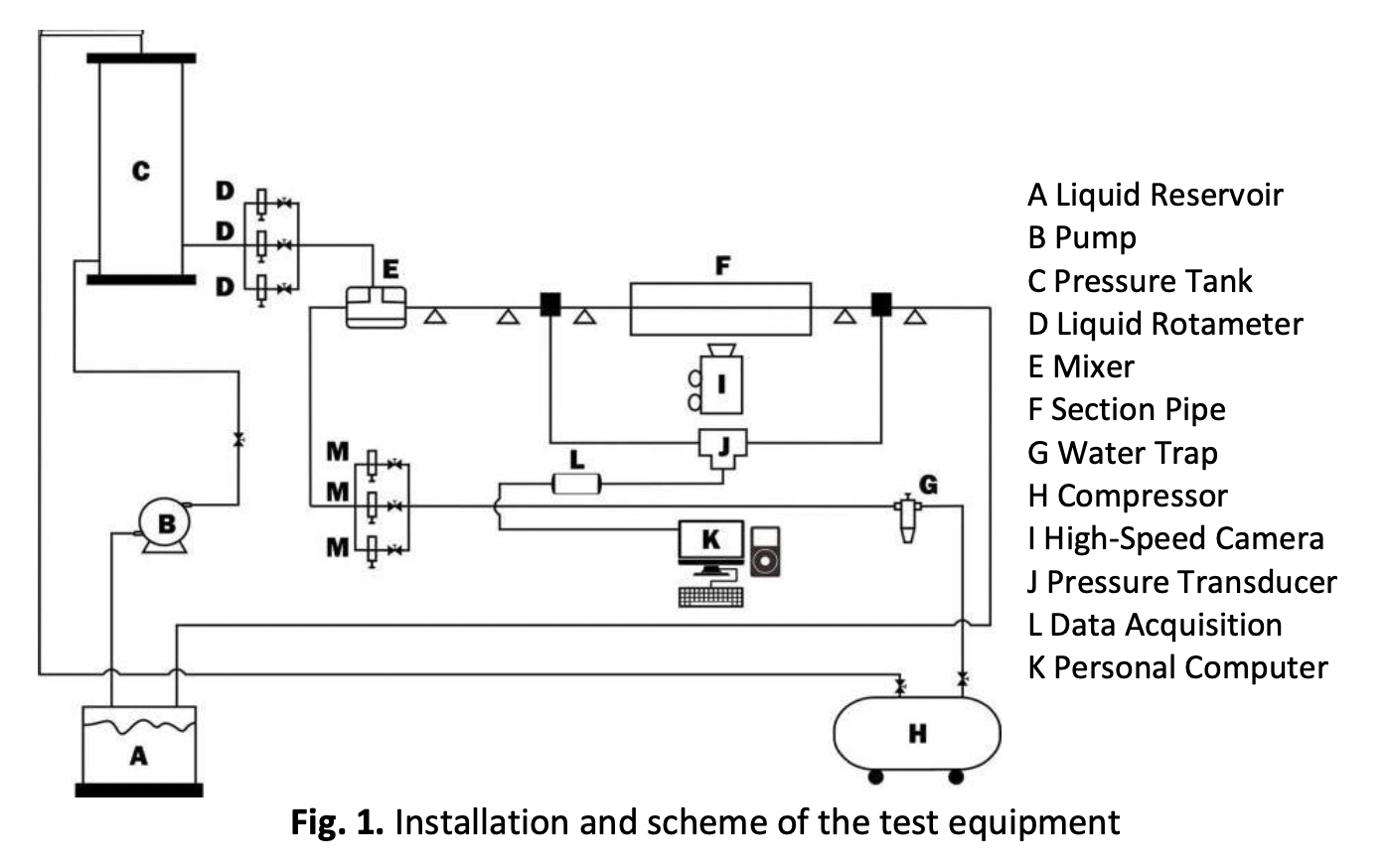Void Fraction of Two-Phase Flow of Air – Emulsion of Water and Oil in Horizontal Mini Pipe
DOI:
https://doi.org/10.37934/arfmts.110.1.121130Keywords:
Two-phase flow, oil, void fraction, viscosity, emulsion, mini pipeAbstract
Two-phase flow is the most straightforward flow of multi-phase flow. The void fraction is one of the significant parameters affecting the two-phase flow pattern on both small and mini channels. The flow pattern will be significantly sure, and fluctuations in pressure will change. If the pressure fluctuations are very high, it will affect the piping network system or channel and cause damage. Somebody can find the application of this case of damage to mini heat exchangers, mini boilers, and other small and mini equipment. This paper presents a significant correlation between void fractions and flow patterns. This study used a glass pipe with a length of 160 mm and a diameter of 1.6 mm with a horizontal position. The working fluids used are an emulsion of water and coconut oil with a concentration of 350 mg/dl and 500 mg/dl. The superficial velocity is gas (JG) = 0.08 m/s to 74.6 m/s, and the superficial velocity of the Liquid (JL)= 0.04 m/s to 4.15 m/s. Data measurements use a high-speed camera and are processed using MATLAB R2014a software. The research results showed that the difference in the concentration of the emulsion of water and coconut oil sufficiently affected the value of the void fraction significantly. The void fraction is because the increased concentration of such emulsions affects the increase in the viscosity value of the Liquid. The increase in the viscosity of the Liquid affects the speed of the Liquid tends to decrease. Under these conditions, the increasing superficial velocity of the gas affects the value of the growing void fraction.
Downloads

































